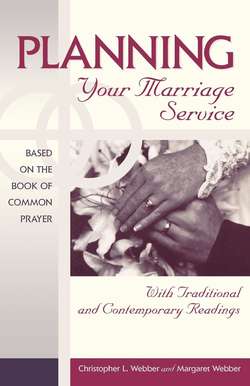Читать книгу Planning Your Marriage Service - Margaret Webber - Страница 13
На сайте Литреса книга снята с продажи.
D. The Presentation (optional)
Оглавление1) A generation or two ago, it was customary for the bride's father to escort her down the aisle and stand between her and the groom through the opening statements. Then the priest said, “Who giveth this woman to be married to this man?” and the father gave the bride's hand to the priest, who gave it to the groom. Originally this represented the carrying out of a contract between families and even between tribes.
2) In a modern version, the priest would ask, “Who presents this woman to be married to this man?” The bride's father (or other presenter) would then respond, (2a) “I do,” or, (2b) “Her mother and I do.” The father would then usually give his daughter a kiss and step back to stand with his wife.
3) For a more complete expression of family support the priest might be asked to say, “Who presents this man and this woman to be married to each other?” The bride's escort would then say, (3a) “I do.” Alternatively, (3b) the parents or escorts of both bride and groom might respond together: “We present John and Mary to be married to each other.” Or, (3c) the parents or escorts of the bride and groom might respond separately: “We present John to be married to Mary,” and “We present Mary to be married to John.” If parents or others have come down the aisle with the bride and groom, they might stand at the front of the church until they have made this response and then step back to their places in the congregation.
4) Another common pattern is for the bride's escort to walk with her to the front of the church, give her a kiss, give her hand to the groom, and step back into the congregation to relax and enjoy the ceremony.
The first three variations would normally come after the opening statements. The fourth alternative would come before the opening statements are made.
